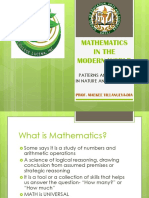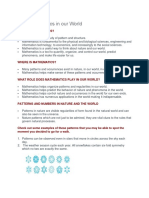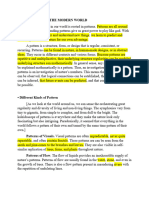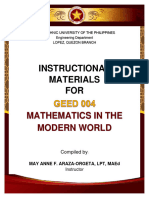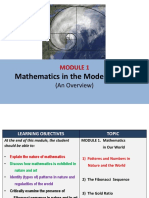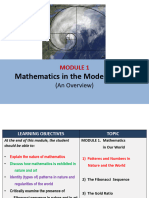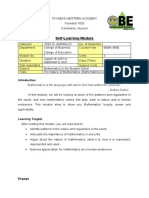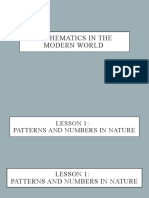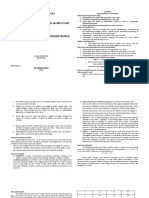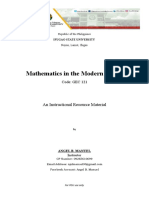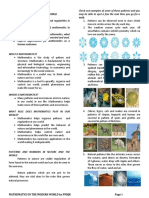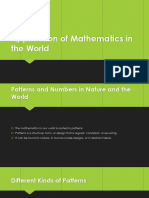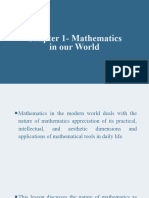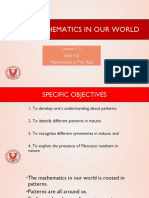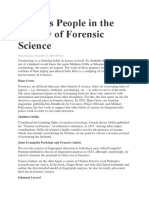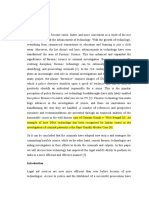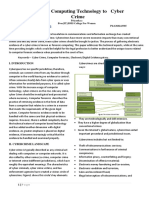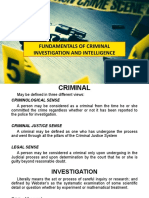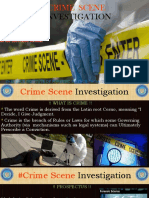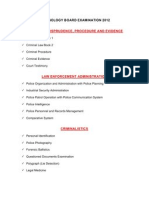0% found this document useful (0 votes)
70 views14 pagesGE4 Module 1
This document provides an overview of patterns found in nature and mathematics. It discusses 7 types of patterns: 1) symmetry, 2) fractals, 3) spirals, 4) waves and dunes, 5) spots and stripes, 6) tessellations, and 7) foam. These patterns are seen throughout nature in structures like trees, shells, animal coats, clouds, and more. The document also notes that patterns in nature can be described mathematically, and that investigating natural patterns involves the study of numbers and logical relationships in the world.
Uploaded by
Kenny James AbellanosaCopyright
© © All Rights Reserved
We take content rights seriously. If you suspect this is your content, claim it here.
Available Formats
Download as PDF, TXT or read online on Scribd
0% found this document useful (0 votes)
70 views14 pagesGE4 Module 1
This document provides an overview of patterns found in nature and mathematics. It discusses 7 types of patterns: 1) symmetry, 2) fractals, 3) spirals, 4) waves and dunes, 5) spots and stripes, 6) tessellations, and 7) foam. These patterns are seen throughout nature in structures like trees, shells, animal coats, clouds, and more. The document also notes that patterns in nature can be described mathematically, and that investigating natural patterns involves the study of numbers and logical relationships in the world.
Uploaded by
Kenny James AbellanosaCopyright
© © All Rights Reserved
We take content rights seriously. If you suspect this is your content, claim it here.
Available Formats
Download as PDF, TXT or read online on Scribd
/ 14


